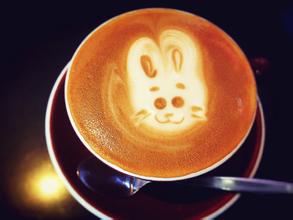Kenya Jinchu Coffee Flavor Manor with excellent Flavor characteristics of Fine Coffee beans
The grading of coffee beans in Kenya is slightly different from that in other countries. Kenya uses AATop, AA++, AA, AB,A,B,C and PB to grade beans in addition to the elevation of origin, size and defect rate of beans, which are used by all countries. The quality decreases in turn, AATOP is the highest, and C is used as feed and fertilizer. And PB means PeaBerry, ranking above AA. It is one of the few at the top of every coffee tree, a rare bean with only one coffee bean in a coffee fruit. Because there are two half-and-half hemispherical beans in the coffee fruit, while the round bean is but only one spherical bean, it is richer in flavor and contains more substances than two hemispheric beans in a coffee fruit.
In addition, in Kenya, except that the main varieties are SL28, SL34, K7 and Ruirull11, the best flavors are SL28 and 34, which are not resistant to leaf rust but have vulgar berry flavor, so they are usually grown in high altitude areas, in which SL28 is drought-tolerant and SL34 is moisture-tolerant. The real Kenyan top coffee comes from these two varieties, while K7 has a general taste but is more resistant to diseases and insect pests, so it is grown in low altitude areas, while Ruirull11 has Robusta gene. Poor flavor is used for mass production of commercial beans. Well, the delicious Kenyan AA I drank, that is, from SL28 and 34, there is no doubt that after consulting, it turns out that this method of treatment is that the coffee bean washing tank in Kenya has two layers, and the process is as follows: in the evening, the defective coffee fruit is removed, the peel is removed, and then the sticky shell beans are poured into the upper fermentation tank. After fermentation all night (but there is also dry body fermentation that does not enter the pool), wash the shell beans once in the morning, remove most of the pectin, then enter the lower clean pool for second fermentation, and then renew the circulating water every few hours to avoid the breeding of mold. Then introduce the water into the ditch to remove the residual pectin. This is not over, the washed beans with shells need to be soaked in the clean pool for more than 12 hours before drying and dehydration. So labor-consuming and water-consuming, no wonder the taste spectrum of Kenyan coffee is exquisite and high-quality Arabica coffee beans, its suitable growth conditions are on the slope of 900m ~ 2000 m above sea level in the tropics, the suitable growth temperature is 15024 ℃, the higher humidity, the annual rainfall is not less than 1500 ml, the soil is fertile and suitable for acid and alkali, and those containing volcanic ash are very suitable, as well as appropriate sunshine and shade conditions, based on these characteristics. Most of them are located in countries with alpine terrain on the Tropic of Cancer, and this generation is the so-called world coffee belt, and Kenya happens to be one of them, and the topographical and climatic conditions are very suitable for the growth of high-quality coffee.
Then after tracing back to the origin, it should be a variety. However, what kind of Kenyan AA is the Kenyan AA that I drink with a strong ripe fruit flavor and red wine flavor? What level does it belong to?

Important Notice :
前街咖啡 FrontStreet Coffee has moved to new addredd:
FrontStreet Coffee Address: 315,Donghua East Road,GuangZhou
Tel:020 38364473
- Prev

Flavor and taste of Ecuadorian boutique coffee beans Galapagos Coffee
Ecuador is one of the few countries in South America that produces both Arabica coffee and Robbins coffee. However, as the land suitable for Arabica coffee trees is decreasing, the production of Robbins coffee is gradually increasing. The best Arabica coffee comes from the Andes, especially the Chanchagu Valley (ChanchamgoValley), which is divided into two mountains, from the south to the south.
- Next

Special sweet Panamanian coffee flavor taste introduction to boutique coffee beans in manor production area
The Panamanian flag was launched on November 3, 1904. The flag is rectangular and the ratio of length to width is 3:2. The flag consists of four rectangles of white, red and blue. White symbolizes peace; red and blue represent the former Panamanian Liberal Party and the Conservative Party respectively, and they are also symbols of the two parties' United struggle for the interests of the nation. The blue star on the white background on the upper left represents loyalty and integrity, and the red star on the white background on the lower right represents
Related
- Detailed explanation of Jadeite planting Land in Panamanian Jadeite Manor introduction to the grading system of Jadeite competitive bidding, Red bid, Green bid and Rose Summer
- Story of Coffee planting in Brenka region of Costa Rica Stonehenge Manor anaerobic heavy honey treatment of flavor mouth
- What's on the barrel of Blue Mountain Coffee beans?
- Can American coffee also pull flowers? How to use hot American style to pull out a good-looking pattern?
- Can you make a cold extract with coffee beans? What is the right proportion for cold-extracted coffee formula?
- Indonesian PWN Gold Mandrine Coffee Origin Features Flavor How to Chong? Mandolin coffee is American.
- A brief introduction to the flavor characteristics of Brazilian yellow bourbon coffee beans
- What is the effect of different water quality on the flavor of cold-extracted coffee? What kind of water is best for brewing coffee?
- Why do you think of Rose Summer whenever you mention Panamanian coffee?
- Introduction to the characteristics of authentic blue mountain coffee bean producing areas? What is the CIB Coffee Authority in Jamaica?

